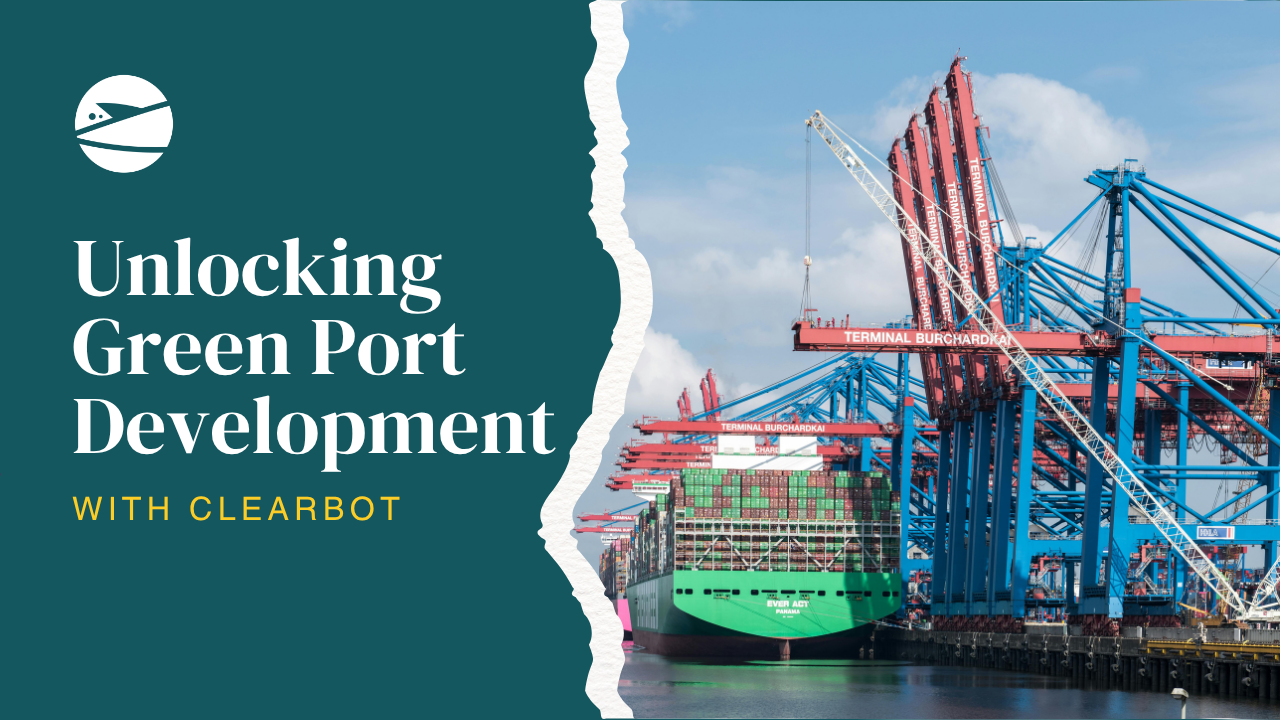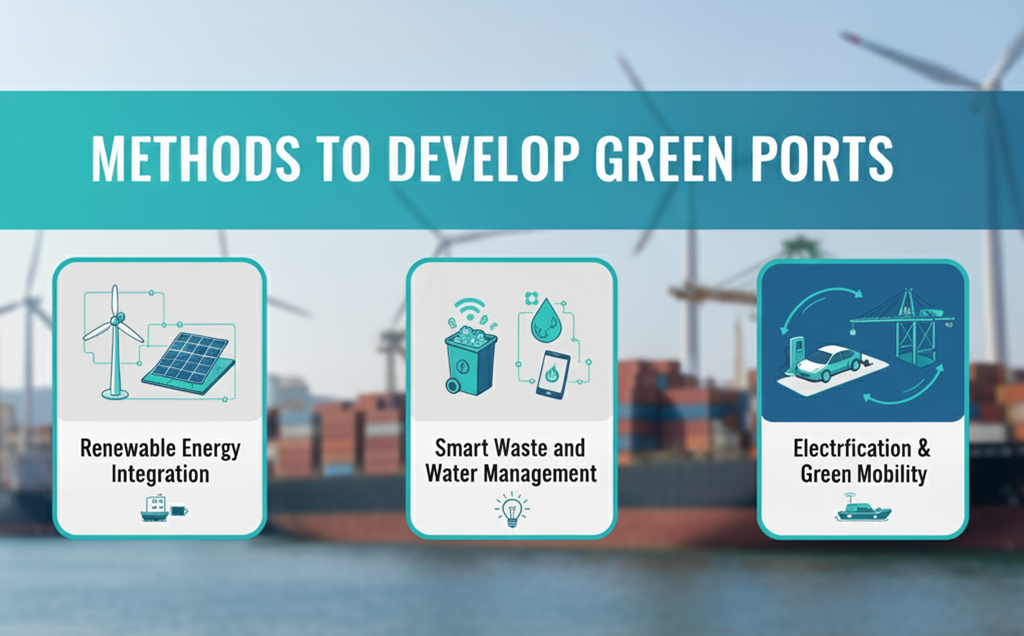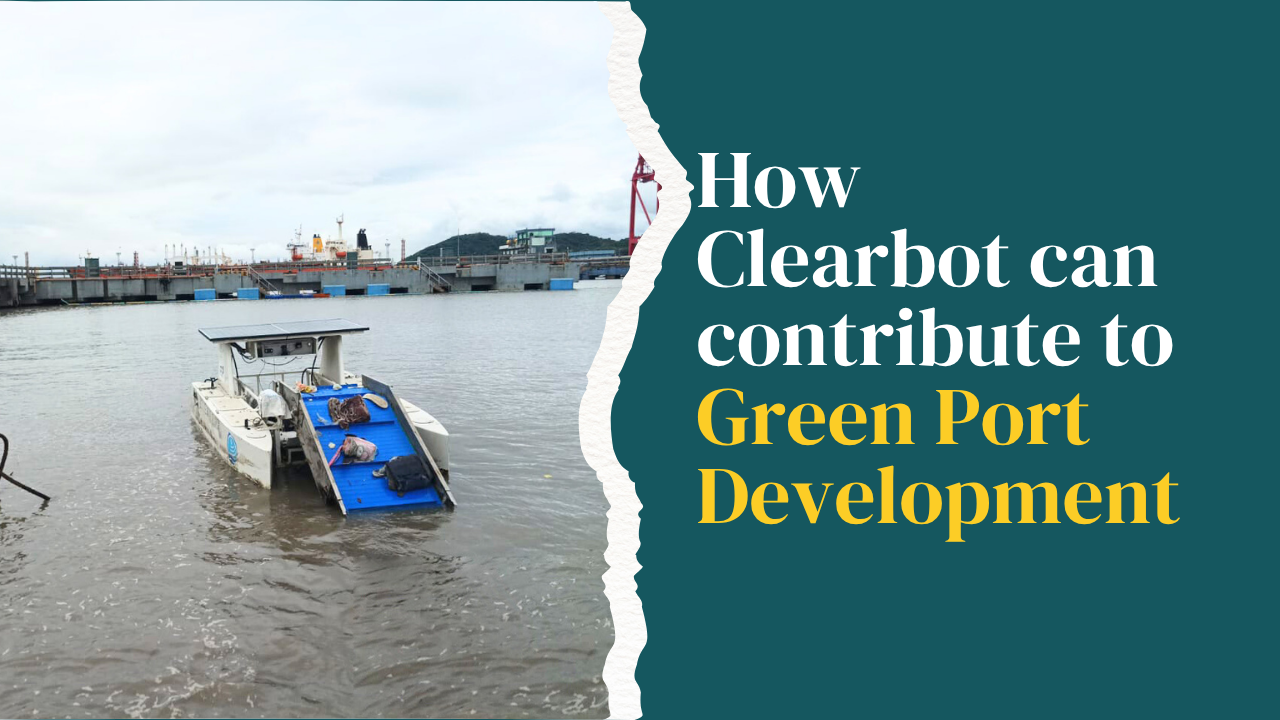Unlocking Green Port Development with Clearbot

Introduction
Ports are vital gateways for international trade, providing value-added services such as loading and unloading cargo. In 2018, maritime transport and global ports handled nearly 80% of the world’s trade volume and over 70% of its total value.
The concept of green ports has emerged due to increased public environmental awareness. The Port of Long Beach adopted its Green Port Policy in January 2005, providing an initial framework for environmentally friendly port operations. The concept of green ports was formally proposed at the United Nations Climate Change Conference in 2009. Green ports are characterized by a thriving ecological environment, efficient resource management, low energy consumption, and minimal pollution. They achieve this through an integrated approach that combines port development with effective resource utilization and environmental protection. In July 2021, the International Maritime Organization announced the “World Maritime Theme 2022: New Technologies for Green Shipping”. Building Green Logistics and Carbon-neutral Ports (GLCPs) is crucial for future development due to growing environmental concerns and energy consumption issues. Both industry and academia have recently focused on green ports, recognizing the need for new technologies and operational management strategies to address these challenges.
Methods to develop Green Ports

- Renewable Energy Integration
Green ports integrate various renewable energy sources to power their systems and vessels. Shore power (cold ironing) is a core strategy, allowing docked ships to plug into the port's electricity—if renewably sourced, this drastically cuts local air pollution like NOx and SOx. Ports maximize available space by installing Solar Power (PV) panels on rooftops and unused land, or as floating arrays. Given their location, they also harness Wind Energy through onshore turbines and by supporting offshore wind farms. Finally, ports are building infrastructure to handle and bunker Alternative and Green Fuels (like green hydrogen and ammonia) for their own vehicles and visiting ships, fundamentally reducing their reliance on fossil fuels.
- Smart Waste and Water Management
Smart Waste and Water Management uses IoT sensors and AI to digitize utility systems for better efficiency and sustainability. For waste, sensors monitor bins in real-time to allow AI to optimize collection routes, cutting costs and emissions. For water, sensors track network parameters for flow, pressure, and quality, enabling AI to perform predictive maintenance and detect leaks instantly, thus minimizing resource loss and enhancing resilience.
- Electrification & Green Mobility
Electrification and green mobility are paramount to Green Port Development because they directly address the sector's main challenge: pollution. This involves substituting fossil fuels with electricity—preferably from renewable sources—for internal port vehicles, cargo handling equipment, and, most critically, for vessels at berth via Shore Power (cold ironing). This shift dramatically cuts local air pollutants (NOx, SOx) and CO2 emissions, enhances port energy efficiency, and integrates the port into the broader sustainable, electrified ecosystem, securing its path to a net-zero future.
How Clearbot can contribute to Green Port Development

Clear Robotics' autonomous surface vessels (ASVs) directly contribute to Green Port Development by offering a suite of zero-emission, data-driven solutions that target the core pillars of port sustainability: environment, efficiency, and data intelligence.
The capabilities of Clear Robotics' vessels translate into the following contributions for a port pursuing a "green" or "smart" classification:
- Zero-Emission Operations and Air Quality
Fully Electric & 95% Less Emissions: By operating on fully electric power (often charged by solar panels), these ASVs eliminate the use of diesel or petrol engines for routine tasks like surveying and cleaning within the port and nearshore areas. This immediately cuts NOx, SOx, and particulate matter (PM) pollution, which are major urban health concerns, delivering an estimated reduction of up to 95% in CO2 emissions compared to conventional crewed boats. This aligns perfectly with the goal of decarbonizing harbor activities.
- 2. Water Quality and Ecosystem Protection
Waste Collection & Aquatic Weed Removal: The robotics are specifically designed for floating trash collection (like plastic debris) and, with specialized models like the Alligator, the removal of invasive aquatic vegetation (e.g., water hyacinth). This prevents pollution from escaping the harbor into the open ocean and directly improves the local marine habitat.
Water Quality Measurements: The vessels are equipped with sensors to collect real-time data on parameters like dissolved oxygen, pH, and turbidity. This continuous environmental monitoring allows port authorities to quickly identify pollution hotspots or contamination events, shifting environmental management from reactive cleanup to proactive intervention.
- 3. Operational Efficiency and Data Intelligence
Hydrographic Survey and Draft Survey: ASVs can conduct highly precise, frequent, and cost-effective hydrographic and bathymetric surveys. This data is essential for maintaining safe navigation channels, optimizing dredging schedules, and performing draft surveys to maximize cargo loading efficiency, which indirectly reduces the environmental footprint per tonne of cargo.Surveillance Capabilities: Leveraging their autonomous navigation systems and cameras, the robots provide 24/7 surveillance and monitoring of port waters and perimeter infrastructure (like pilings, jetties, and outfalls). This improves security, enables predictive maintenance of fixed assets, and provides crucial data for enhancing the port's overall digital "Smart Port" platform.
Conclusion
The transition to Green Ports is a non-negotiable imperative driven by both global trade volume and environmental crisis. By adopting integrated strategies like renewable energy generation (Solar, Wind) and advanced green mobility, ports lay the foundation for a sustainable future. Crucially, innovative autonomous solutions like Clear Robotics' ASVs serve as the technological bridge, enabling ports to enforce a zero-emission agenda while simultaneously achieving operational excellence. Through continuous, AI-driven data collection on water quality and surveys, these vessels allow port authorities to move from reactive cleanup to proactive environmental management, successfully transforming ports into efficient, clean, and highly digitized global gateways. The move toward Green Logistics and Carbon-neutral Ports (GLCPs) is thus realized through the smart fusion of clean infrastructure and autonomous technology.




